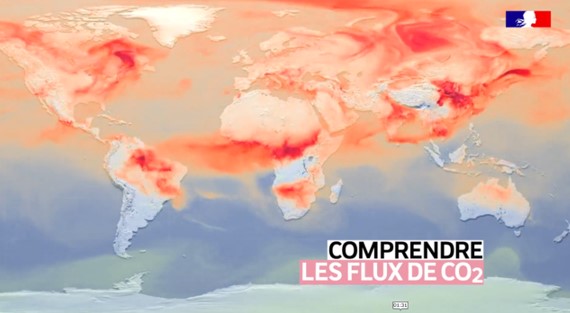Toulouse, April 2nd, 2025 – On April 1, 2025, CNES organized a meeting in Toulouse to present the progress of the MicroCarb satellite, scheduled for launch in July 2025 and designed to measure atmospheric CO2. Presentations were given by Mr François Marie Bréon, Scientific Director of the program and member of the IPCC, Ms Selma Cherchali, head of the Earth Observation and Studies program, and many other speakers from CNES. For this CO2 measurement mission, the MicroCarb satellite’s payload consists of a unique instrument which analyzes solar radiation reflected by the Earth in the mid-infrared range. The more CO2 there is, the less solar radiation is reflected by the Earth. The satellite is to be placed in a sun-synchronous orbit at a “low” altitude of 650 km. This orbit will enable the satellite to fly over each region of the Earth at the same local solar time, thus ensuring consistency in the measurements taken.
The scientific objective of the MicroCarb mission is to measure carbon flows at the Earth’s surface, which correspond to exchanges between carbon sinks (oceans, soils, vegetation) that absorb carbon and carbon sources that create it (fires, human activities mainly concentrated in large cities and industrial centers, etc.).
Carbon sinks include vulnerable vegetation zones such as the Amazon and Africa, and future carbon sources include boreal regions whose soil and vegetation are likely to release CO2 in the near future. Volumes of this greenhouse gas can play a significant role in climate change.
MicroCarb is a 180 kg satellite produced under the aegis of the Centre National d’Etudes Spatiales (CNES) in partnership with the UK Space Agency (UKSA), with a budget of 200 million euros.
Other projects with a similar aim have already seen the light of day around the world (Japan with GOSAT in 2009, China with Tan Sat in 2016, USA with OCO-2 in 2014) but MicroCarb, a Franco-British project, should bring greater measurement precision and also complement and prepare for other missions, such as CO2M (Carbon Dioxide Monitoring), part of the European Union’s Copernicus Earth observation program, designed to monitor and understand our planet. With MicroCarb and CO2M, Europe’s sovereignty in the fields concerned is being built up, and our knowledge of the greenhouse effect on climate is growing. Nadia Didelot for AeroMorning







Be the first to comment on "The MicroCarb satellite, a new European tool for studying the climate"